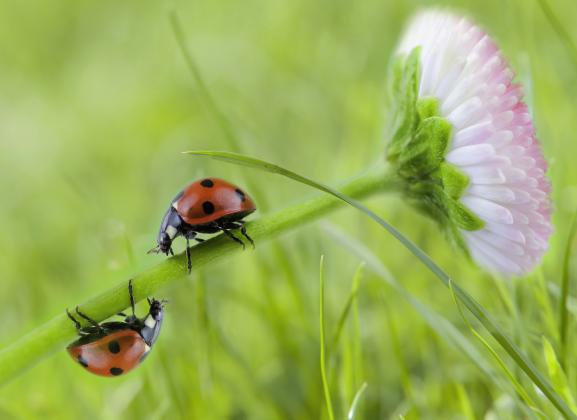By Grantly Ricketts, For the News-Gazette
It has proven that more than 99 percent of insects are of benefits to our existence.
This means that we need to identify and protect those that make our lives better. Let’s get it straight. Not all critters are insects. All insects have six legs. In any landscape, you should able to find beneficial critters such as insects, spiders, millipedes and centipedes. These critters act as pollinators, predators and parasites to pests in our landscapes. Predators reduce the number of pests thereby lessen the need for the use of pesticide. This is important because if pesticides are not applied correctly it can harm human and the environment. The disadvantages with predatory critters are; some resemble pest species, they can bite or sting, which can make working in the landscape painful at times. Also, many predators cannot distinguish between other beneficial and pests. If there are not enough pests to feed on these predators will feed on beneficial insects. The following are examples of beneficial insects and their role.
Ladybug- Both the ladybug larvae and adult are predators, they feed mainly on aphids and other plant sucking insects.
Earwigs- They live mostly below underground and are predators of small insects. Be aware that they routinely crawl in the ear.
Preying Mantis- While they might look very terrifying, they can take down large preys, but not harmful to humans.
Lacewing- Both adult and nymph are predatory, and aphids are their favorite prey. They are unique in that they can camouflage themselves with the skin of their preys.
Predatory Stink Bugs- Both the adult and juvenile can eat insects larger than their size. They resemble other destructive stink bugs.
Bark Lice- They feed on algae and fungus of tree bark. Some species make large webbing across the tree bark.
Many species of wasps and ants are predacious, most can bite and/or sting. Some species are social while others are solitary, and many have a bad reputation. I know it is very difficulty believe that a wasp can be beneficial to the landscape. Let’s forget about the pain they can inflict and focus on their benefits. For example, the paper wasps prey on insects, especially caterpillars. Although yellow jackets are very aggressive, they are considered beneficial because they feed on other insects. Solitary wasps such as mud dauber and potter wasp are not aggressive even at their nest. They can either eat the prey outright or use it as food for their larvae.
Ants- helpful or harmful? Often benefit from landscaping, they nest beneath mulch and stones. They can both be helpful and harmful. Helpful as predators and harmful when they bite, sting, disturb the landscape, or encourage other landscape pests such as aphids. Other beneficial critters are; big-eyed bugs, minute pirate bugs, ambush bugs, predatory mites, cicada killers and tachinid flies.
For more information on beneficial insects and other horticulture topics, you can contact Grantly Ricketts with UF/IFAS extension in Osceola County at 321-697-3000 or email gricketts@ufl.edu.




